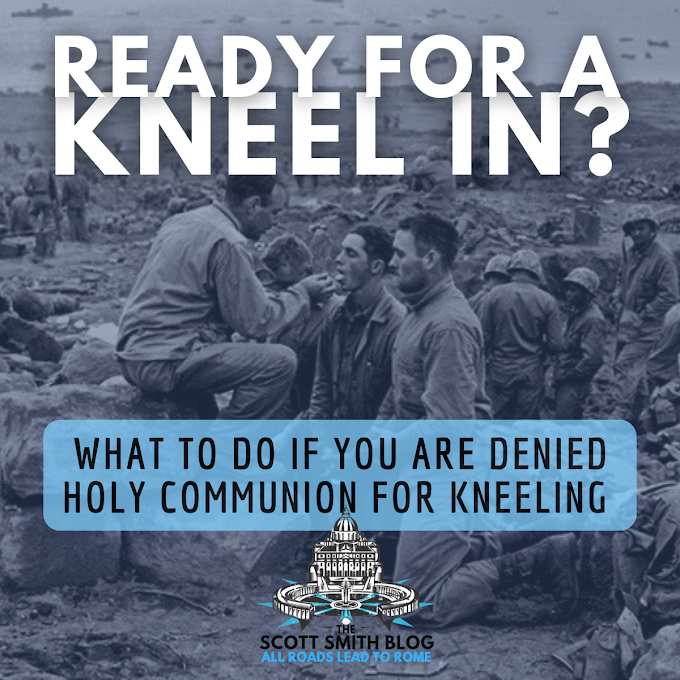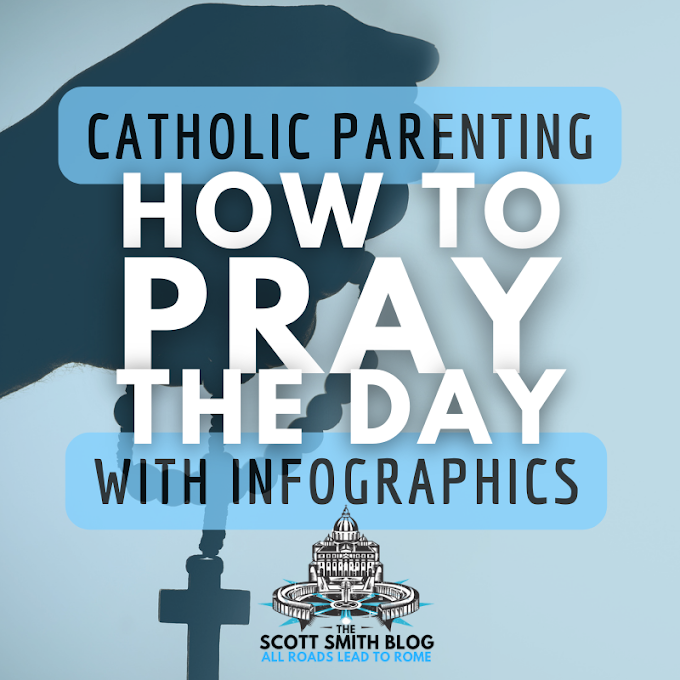Have you ever noticed how similar Gandalf’s death and resurrection are to that of Christ? Let’s take a moment to walk through the events immediately preceding Gandalf the Grey’s resurrection as Gandalf the White.
Read more on the Theology of The Lord of the Rings! These articles form part of a larger work I have written on the Christian symbolism in The Lord of the Rings, available in paperback and ebook versions:
Lord of the Rings & the Eucharist
What is "the one great thing to love on earth", according to J. R. R. Tolkien, the author of The Lord of the Rings?
The Eucharist! Tolkien made sure his one great love was woven throughout his books. It's easy to find if you know where to look.
In Smith's new book, find Tolkien's hidden Eucharist! The Lord of the Rings can't be fully understood without understanding its hidden Eucharistic significance. What's more, perhaps: J. R. R. Tolkien can't be fully understood apart from his Catholic identity and his devotion to the Eucharist. Are you ready to read Lord of the Rings like you never have before?
Lord of the Rings: Who is Gandalf?
Gandalf is one of the five Istari (Wizards) sent to Middle-earth by the Valar in the Third Age. Gandalf is the wisest of the Maiar, who are minor Ainu. The Ainu, which means "Holy Ones," were the first of the creations of Eru Ilúvatar.
The Maiar were born of Eru Ilúvatar's thought. This is very much like the Word of God, which is made flesh. The wizards – Gandalf, Saruman, Radagast, et al. – were each a Maiar. They all existed before Elves, Men, and Dwarves.
So, how old is Gandalf?
Gandalf states that “300 lives of men, I have walked this earth.”Taking the average life expectancy of man, conservatively, at 50, that would put Gandalf at the ripe old age of 15,000. That’s fifteen thousand years old!
After 15,000 long years, Gandalf is about to die …
The trouble began when Gandalf was forced to finally confront the Balrog of Morgoth on the Bridge of Kazad-dûm.
The Bridge of Kazad-dûm
The Balrog had pursued the Fellowship throughout the mines of Moria and would have, presumably, pursued them beyond the Dimrill (eastern) gate of Moria, as well.
Here is the passage from The Lord of the Rings describing Gandalf and the Fellowship at the Bridge of Kazad-dûm:
Suddenly Frodo saw before him a black chasm. At the end of the hall, the floor vanished and fell to an unknown depth. The outer door could only be reached by a slender bridge of stone, without kerb or rail, that spanned the chasm with one curving spring of fifty feet ...They could only pass across it single file. At the brink Gandalf halted and the others came up in a pack behind.[1]
Gandalf turned and confronted the Balrog, wielding the “Secret Fire,” which actually refers to the Spirit of the Creator God of Tolkien's mythos. This is "Secret Fire" is a reference to the Holy Spirit of the Lord of the Rings, which I have written more about here.
Gandalf blocks the narrow bridge, allowing the others to escape. Gandalf shatters the Balrog’s sword and then cracks the bridge with his staff. The wizard ultimately defeats the Balrog on the bridge, but in so doing seals his own fate, as well. They both fall from the bridge together.
The Balrog strikes at Gandalf's heel! Note how this resembles Genesis 3:15, the Protoevangelium: "he shall bruise your head, and you shall bruise his heel."
More on this below!
Together, the Balrog and the wizard fall down into the deepest hole beneath Middle Earth. They fall and they fall and the fall. They fell for a very long time, possibly hours to even an entire day.
All the while, Gandalf was burning in the Balrog’s fire. At the end of the nearly endless descent, they plunge together into the deep lake beneath the roots of the mountain. Gandalf would later call this lake as cold as the tide of death and that it nearly froze his heart.
Gandalf and the Balrog fought in the lake until the creature fled into the dark tunnels which surround the lake. Gandalf describes these tunnels as hiding dark secrets:
Far, far below the deepest delving of the Dwarves, the world is gnawed by nameless things. Even Sauron knows them not. They are older than he. Now I have walked there, but I will bring no report to darken the light of day.[2]
One of these “nameless things” might even have been the Watcher in the Water that hid at the entrance of the western gate of Moria.
The Endless Stair & Christ's Return from the Abode of the Dead, Sheol
Gandalf pursued the creature farther until the Balrog led him to the Endless Stair. Following the Balrog was Gandalf’s only means of escaping the pit.
The Endless Stair spiraled up from the roots of the mountain all the way the pinnacle of the Silvertine above the clouds. The stair led to Durin's Tower in the living rock of Zirakzigil. The Balrog likely learned the way to Durin’s Tower from Durin, himself, as the Balrog was named “Durin’s Bane”.
They fought on the highest peak of the highest mountain until at last Gandalf threw down his enemy. So massive was Gandalf’s adversary that it broke the mountain-side as it fell.
After his victory, darkness took Gandalf, and he died. His body lay on the peak as on a giant altar. The entire battle, from Bridge of Khazad-dûm to the mutual demise of Gandalf and the Balrog, took ten days.
The Passion, Death, and Resurrection: All the Similarities Between Gandalf and Jesus
So, how does Christ’s victory over Satan on the Cross resemble a wizard fighting a demon? Further, how does Christ’s descent into Hell, Resurrection, and eventual Ascension compare with Gandalf’s great fall into the depths and rising again?
- Gandalf casts down the power of evil, just as Christ defeated Satan’s power over death on the Cross
- Gandalf is a sacrificial lamb, just as Christ is the Lamb of God
- Gandalf wields a sword, just as Christ wields the Sword of the Spirit
- Gandalf and Christ both begin their descent into the depths from a Cross
- Gandalf’s victory over evil results in his death, just like Christ
- Gandalf descends into the abyss, just as Christ descended into hell
- Gandalf descends to “hell” first through fire and then through cold, similar to Dante’s depiction
- The days of Gandalf’s descent and ascent are numbered like Christ’s descent into hell, 10 versus 3
- Both Gandalf and Christ have an Ascension
- Both Gandalf and Christ’s friends don’t recognize him after the Resurrection
- Both Gandalf and Christ are adorned in blinding white clothes

Gandalf casts down the power of evil, just as Christ defeated Satan’s power over death on the Cross
Balrog is basically a demon. It is a Balrog created by Morgoth, formerly named Melkor. This is the Satan figure in The Lord of the Rings. Sauron once fought alongside Morgoth as his lieutenant.
Gandalf is a sacrificial lamb, just as Christ is the Lamb of God
Gandalf lays down his life for the Fellowship. He is the sacrificial lamb. In ancient Jewish tradition, all the sin of the nation was heaped onto the back of a lamb or goat.The goat was the “scapegoat”. This is where that term originated. The goat was then thrown off a cliff as a sacrifice. In much the same way, Gandalf sacrifices himself willingly (the goat wasn’t a willing sacrifice) to save the Fellowship. But it is the power of sin and evil, the Balrog, that casts Gandalf over the edge of the precipice.
Gandalf wields a sword, just as Christ wields the Sword of the Spirit
Gandalf’s sword breaks the Balrog’s sword. Gandalf wields Glamdring, a legendary sword. Though Gandalf found Glamdring in a troll-hoard ealong with Bilbo’s Sting in The Hobbit, the sword’s history traced back over 6,500 years.Glamdring was originally borne by Turgon, the King of Gondolin. It was called the “Foe-Hammer.”
Look at Ephesians 6:16-17: “Above all taking the shield of faith, with which you can quench all the flaming darts of the evil one. And take the helmet of salvation, and the sword of the Spirit, which is the word of God.”
I have written more about the "armor of God" at Ephesians 6 HERE.
When Gandalf stands alone before the Balrog, he is clearly wielding faith, the shield of Scripture. More direct than that, he is the wielder of the Secret Fire, which is the Holy Spirit in the Tolkien universe. Gandalf is, therefore, wielding the Sword of the Spirit.
Gandalf and Christ both begin their descent into the depths from a Cross
When Gandalf strikes his staff against the narrow bridge of Khazad-dûm, the wizard’s staff and the bridge together form a cross. Even Gandalf’s wooden staff, itself, is a sort of cross. It is very much like a bishop’s crozier or staff, most of which are cross-shaped.Gandalf’s victory over evil results in his death, just like Christ
In Genesis 3:15, it is prophesied by God that the Messiah “shall bruise [the serpent’s head,” but in so doing, the serpent “shall bruise his heel.” In Christ’s Passion and Death, he strikes at the serpent’s skull.I have written more on Genesis 3:15, the "First Gospel" or Proto-evangelium, HERE:
On the literal level, the Cross of Christ stabs into the ground at Golgotha, the “place of the skull.” The Cross of Christ also dealt a mortal blow to the skull of Satan, breaking his power over death.
I have written more on the "skull" of Golgotha HERE:
Even so, Christ accomplished these great works through his own death. That is, Satan struck out, like a serpent, biting Christ’s heel. Christ and Satan mortally wound each other.
Though Gandalf and the Balrog cast each other into the abyss, they do not mortally wound each other, which is the “crux” of the Messianic symbolism. This happens later.
Gandalf pursues the Balrog down into the deepest depths and up to the highest peak. Thereupon, Gandalf smites the Balrog against the mountainside. Gandalf kills the Balrog and then shortly thereafter succumbs to death, himself. In the end, they mortally wound each other, just like Christ and Satan.
There will be no resurrection for Satan and the Balrog, however.
Gandalf descends into the abyss, just as Christ descended into hell
It can be no coincidence that Gandalf fell into the abyss after sacrificing himself. Immediately after his death on the cross, Christ descended into the abyss to hell.The Apostles’ Creed states that Christ “descended into hell” following his death on the cross. This is also called the “Harrowing of Hell.”
Christ didn’t exactly descend into hell. It was more likely Sheol, the place where the dead, some righteous and some not, waited for the coming of the Messiah. In 1 Peter 3:19-20, we are given more information about where Christ descended:
[Jesus] went and preached to the spirits in prison, who formerly did not obey, when God’s patience waited in the days of Noah, during the building of the ark, in which a few, that is, eight persons, were saved through water.
It is worth noting that a giant lake of water lay at the bottom of the abyss in LOTR, as the verse above just happens to mention the water of Noah’s flood.
Gandalf descends to “hell” first through fire and then through cold, similar to Dante’s depiction
When we think of hell, we often associate it with hellfire. Gandalf definitely encounters fire in his descent, as he is burned all the way down in the fire of the Balrog. Though Gandalf burns in the Balrog’s fire, he is not consumed. In this, he is like the Burning Bush which Moses encountered in the desert. The ancient Hebrews also recognized the burning bush as a type for the coming Messiah.At the bottom of the almost bottomless abyss, however, is not a pool of fire, but a bitterly cold lake. Gandalf would later call this lake as cold as the tide of death and that it nearly froze his heart.
Compare this to the description of the Ninth Circle of Hell in Dante’s Inferno. At the center of the Ninth Circle is Satan himself frozen up to his breast in ice. The beating of Satan’s wings creates the ice which ensnares him. The cold wind he creates is felt throughout the other circles of hell, as well. In this section of Hell, sinners are frozen alongside Satan in a great lake of ice.
Dante’s description of the ninth circle of hell is amazingly similar to Tolkien’s description of the abyss. The tide of death that nearly froze Gandalf’s heart could easily be Dante’s frozen lake.
The days of Gandalf’s descent and ascent are numbered like Christ’s descent into hell, 10 versus 3
Tolkien takes the time to number the days of Gandalf’s descent, just as Scripture numbers the days of Christ’s descent. This is an important detail.Christ descended into hell for three days between the Crucifixion and the Resurrection. Gandalf’s time period was ten days. Was Christ faster because He is God? No, just kidding. I think Tolkien is doing a couple things here.
First off, there were three days between Christ’s Crucifixion and Resurrection. There were ten days between Gandalf’s fall from the bridge and his death. Between Gandalf’s death and resurrection, he said he experienced entire “life ages” of the earth. The timeline is obviously different.
But why ten days? It is possible that Gandalf descended for three days, just like Christ, and then ascended for seven, totaling ten days in all. Seven is obviously a special number in Scripture. While some mistakenly call it the number of perfection, the Hebrew word for seven is associated with the covenant.
The Covenant between God and Creation was confected on the seventh day. If Gandalf died on the seventh day of his rising, Tolkien could be saying that Gandalf became a new creation on seventh day.
There is also a nod to the Sacrament of Baptism embedded in this seventh day concept, because Gandalf passes through the cold waters of death and the lake before rising, ultimately,to new life.
Both Gandalf and Christ have an Ascension
Following the descent, Gandalf ascends to the highest peak, just like the Ascension of Christ that followed His Resurrection. The order of Gandalf’s ascension and resurrection is somewhat reversed from that of Christ.Nevertheless, Gandalf’s physical ascension on the Endless Stair takes him to the clouds, if not the heavens. Next, the great eagle Gwaihir actually comes and bears him up into the heavens and then on to Lothlórien, where he was clothed and replenished, and given a new staff by Galadriel.
Gandalf’s first ascension ends in his death and precedes the last stage of his ascension beyond death to new life.
Both Gandalf and Christ’s friends don’t recognize him after the Resurrection
Aragorn, Legolas, and Gimli do not recognize the hooded figure of an old man that first appears to them at the edge of Fangorn Forest and scares away their horses. They actually mistake Gandalf for Saruman.Compare this to Mary Magdalene’s encounter with the risen Christ at John 20:14-15:
She turned round and saw Jesus standing, but she did not know that it was Jesus. Jesus said to her, “Woman, why are you weeping? Whom do you seek?” Supposing him to be the gardener, she said to him, “Sir, if you have carried him away, tell me where you have laid him, and I will take him away.”
Mary Magdalene actually confused Jesus for the gardener. She confuses him for another, just as Gandalf’s friends confuse him for Saruman.
Both Gandalf and Christ are adorned in blinding white clothes
Upon his resurrection, Gandalf the Gray becomes Gandalf the White. More than that, Gandalf’s garments became supernaturally bright:There [Gandalf] stood, grown suddenly tall, towering above them. His hood and his grey rags were flung away. His white garments shone. […] They all gazed at him. His hair was white as snow in the sunshine; and gleaming white was his robe; the eyes under his deep brows were bright, piercing as the rays of the sun; power was in his hand. Between wonder, joy, and fear they stood and found no words to say.
At the Transfiguration of Christ, the Apostles are treated to an image of the Risen Christ. Matthew 17:1-2 describes the Transfiguration:
And after six days Jesus took with him Peter and James and John his brother, and led them up a high mountain apart. And he was transfigured before them, and his face shone like the sun, and his garments became white as light.
For more quality Sci-Fi and Fantasy nerdiness, you can check out my articles at Nerdatron.com.
























5 Comments